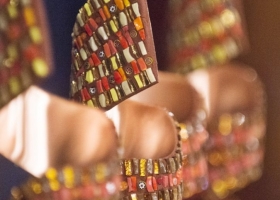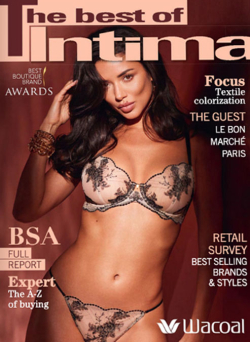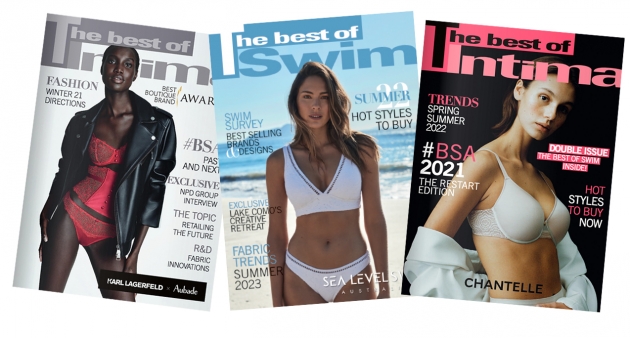
The Best ofIntima & Swim Edit
Back in 1957
04 July 2017
In our winter edition we brought you a special anniversary dossier all about lingerie, but now the sun is high in the sky and only one thing is on our minds, swim!

Our anniversary saga continues with Back in 1957 - Part Two, this time dedicated to swimwear. What happened in 1957, the year of the first edition of Intima Magazine? What were women wearing on the beach during the post-war period? What role did this little piece of fabric play in the period’s societal transition? What can we learn about the evolution of morals and lifestyles? Once again we have the great pleasure of welcoming guest of honor, Ghislaine Rayer, who alongside Patrice Gaulupeau will inaugurate a 3229 sq. ft. exhibition dedicated to the golden age of swimwear this summer. Let’s flash back through the 1950s right up to the 1960s.
THE HAYS CODE
Puritanism prevailed during the 1950s, great power was to be found in Maccarthyism and the US lobby from the National League of Decency was spreading across the world. Amongst all of this, the Hays code, a censorship guide for Hollywood filmmakers, was one of the most severe in more than thirty years and halted the progress of a flourishing industry.
In practice, the strict application of the code would have involved following an absurd set of rules…Kissing was timed, nudity was forbidden, and revealing costumes were banned, double beds were not allowed on screen, instead directors were only allowed to show twin beds. In the 1950s, Hollywood’s actresses were no longer allowed to appear on screen lightly dressed, or worse, in lingerie. In order to get around the regulations, cinema producers had the idea of showing off their stars fantastic physiques by getting them to pose in swimsuits. Scenes that featured undressing or provocative lingerie had to be avoided, except those that were an essential part of the scene. What’s more, William Hays, was subject to a particular fetish, keeping track of female belly buttons. High waisted two piece suits became the only sexy and glamours piece allowed on film or in movie promotions. As far as the one piece swimsuit went, the best stars were able to use it to their advantage, as long as they played by the rules!


THE BATHING BEAUTY
“The Bathing Beauty” was the first completely aquatic Hollywood film. Beautifully shot in the biggest studio ever constructed, its synchronized swimming scenes were choreographed perfectly by master Busby Berkeley featuring Esther Williams, a star who’s only costume is a swimming costume.
Her swimming costumes were provocative for the time and in terms of style were works of art. Nicknamed “Million Dollar Mermaid”, the American actress went on to become a business woman after starring in at least twenty Hollywood films. She threw herself into swimsuit creation, working for the brand Catalina and then launching her own label and is still available today.
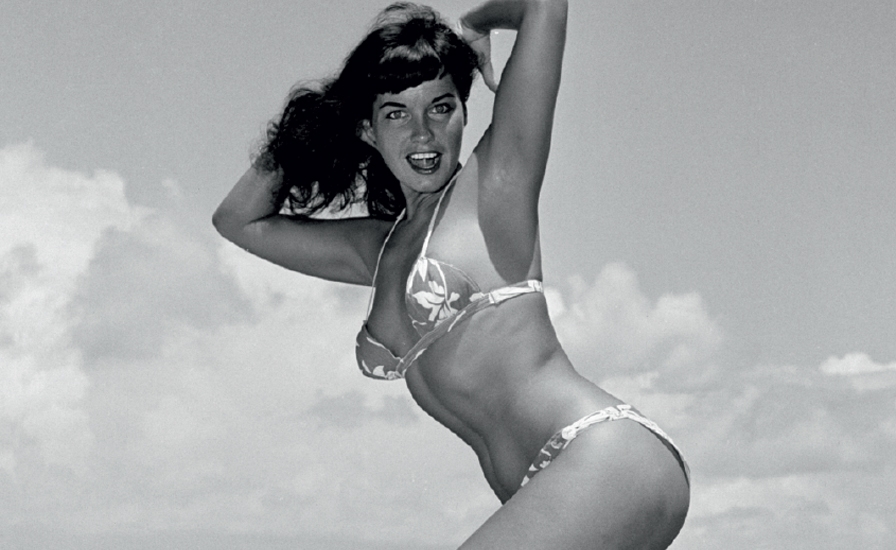
THE GOLDEN AGE OF PIN UP
Where does this word pin up come from? The word describes a feminine representation, a drawing or a photo, often cheerful but always sexy…In fact, during the Second World War, pin up girls were extremely popular amongst the military and particularly with G.I.s. Pin up girls were frequently displayed on walls and packs. Certain pilots, with their superior’s blessing, were known to paint them on the nose of their bomber planes.
The 1950s became the golden age of pin up, most notably in the USA. At this time, they were everywhere, appearing in magazine headlines, newspapers, posters, calendars, and little collectible portrait editions…
The most famous was Bettie Page, known for having posed in sexy lingerie, she is most remembered for her poses in leopard print swimsuits which actually made this print famous again. Their success story continues right into the 1970s, when they were largely used for advertising. Even Coca-Cola asked Marilyn Monroe to promote their famous drink.
Once erotic magazines such as Playboy and Penthouse began making an appearance, pin up girls began to progressively disappear, allowing more realistic photos of naked women to take center stage.
For some time now we have begun to regain interest in these 1950s stars. Fashion, advertising, the media and artists are putting this style back in fashion. Famous style icon, Dita Von Teese with her international shows personifies the big return of pin up style!
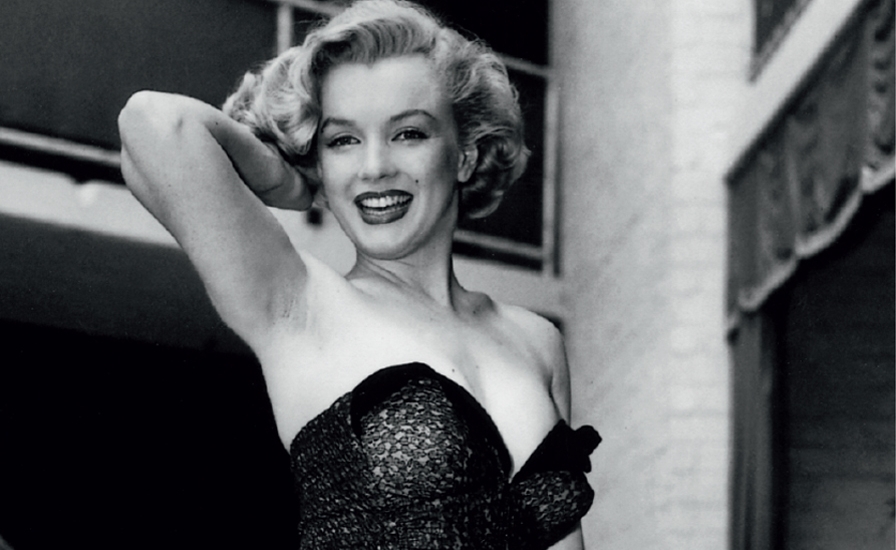
MARILYN THE LEGEND
Marilyn Monroe is a global glamor icon, the word photogenic was invented for her. But the actress could never have imagined that one day this would be her destiny. Born to an unknown father and a schizophrenic mother, she was placed with a foster family at age nine and married in 1942, at the age of 16 to a factory laborer who enlisted in the merchant navy. Marilyn, who did not finish high school, ended up finding a job in the same factory as her husband as a parachute inspector. It was here that she caught the eye of army photographer David Conover, who had been sent to illustrate the involvement of women in the war effort. He was searching for a “physique” that would increase troop’s moral when they were abroad. Here he found Norma Jean….A young woman of 18 years old, who, even in dungarees, had a very interesting air.
Thanks to this series of photos, published a little later in the magazine YANK in 1945, she had the opportunity to do the cover for around thirty pin up magazines and began to be known as the “Mmm Girl.” She left her work at the factory to concentrate on her career as a model, notably at “Blue Book Modeling Agency.” In December 1945, she shot her first film-test for the agency to promote swimming costumes. The “sex bomb” was born and her career began…Even though she would later become an actress, then a star, she remained an ambassador for beachwear brands who used her smile, and her incomparable physique to promote their swimsuits.
Marilyn is not a legend but THE legend.
BARDOT OR THE NEW-LOOK SPIRIT
Throughout the 1950s, swimming suits were worn as two pieces (with high waisted bottoms that above all covered the belly button) and the one piece that allowed women to undress without being immodest. This decade is marked by the creative developments of the one piece swimsuit fashion and the skirt-swimsuit.
The skirt-swimsuit is one of the 1950s biggest successes. Intended to give swimmers a little more coverage, it had the advantage of also being suitable to wear to the swimming pool bar or in the hotel gardens. The swimsuit was no longer just for swimming but also became beach or cocktail attire, perfect for Pool Parties. A flamboyant swim fashion was very much a hit during this decade. Prints and spangled costumes were very much in style and suits were often decorated with buttons, faux lacing, belts and large pockets. The skirt could be straight, slightly open, wrap skirt style or cut short.
However, post war fabric rationing in Europe put a halt to the swimsuits’ success. Only the very rare high couture brands were able to continue.
Famous designers collaborated with American brands, leaders in the market such as Jacques Fath did promotions with Sutex, Christian Dior partnered with Cole of California and Elsa Schiaparelli teamed up with Catalina.

NOT TO MISS THIS SUMMER
Exhibition, “Pin-Up, l’Age d’Or du Balnéaire” (Pin Up, the Golden Age of Swim)
Comissioned by Ghislaine Rayer and Patrice Gaulupeau
Galerie Joseph, 7 rue Froissart, 75003, Paris, France
July 4th - September 3rd 2017
From 11-20:00 h / Open seven days a week
www.nuitsdesatin.com
Copyright 2025. All right reserved - Terms





